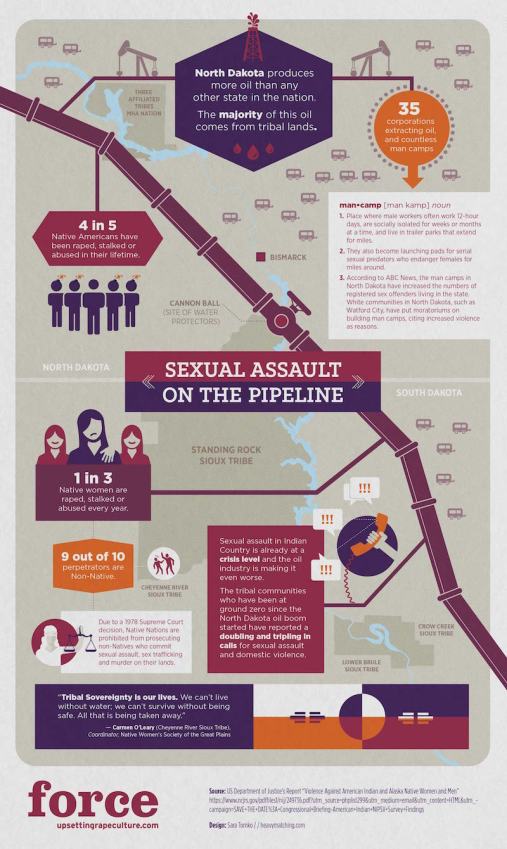Home: Paying Attention to Standing Rock
A reflection written by Women’s Center director, Jess Myers
As Critical Social Justice: Home comes to an end today, I can’t help but to think about what is happening at Standing Rock right now where over 100 police with military equipment are advancing on a resistance camp established by Native American water protectors in the path of the proposed $3.8 billion Dakota Access pipeline (details). My week starting off with me tuning into Democracy Now! to hear reports from water protectors who were arrested over the weekend at a peaceful march after they were confronted by police in riot gear, carrying assault rifles (details).
Then at the CSJ keynote event, Leah Lakshmi Piepzna-Samarasinha opened her talk by acknowledging the Susquehannock and Lenape people, whose land UMBC stands on or is nearby. She went on to say that except for the Piscataway, Maryland does not recognize any Nations because, as with many mid Atlantic states, Native people were displaced onto Oklahoma Indian Territory or other places of displacement during colonization in the 1700s. When I lived in Colorado, speakers at events would often start with this land acknowledgment, in fact, some professors even named it in their course syllabi. It has been a long time since I’ve been in a space where this critical history has been acknowledge.
Later in the week, I saw an infograph created by FORCE: Upsetting Rape Culture that outlined the scary realities of “Sexual Assault on the Pipeline.”

As we spent the whole week exploring and navigating the complexities of home, I can’t stop thinking about Standing Rock, the water protectors, and what the pipeline will do to the homes and communities of Native American and Indigenous people, specifically the Standing Rock Sioux tribe. We would be remiss if we did not name their cause, efforts, and fight for home this week.
In social justice circles, you’ll often hear people say, “Do the work.” This is a call for us to learn about issues, do self-reflection, and appropriately lend our voice and action to the cause. While I’m still learning about this evolving issue, I wanted to at least share the information I’ve been accessing and provide some resources for where we can keep learning about this critical issue happening right now. Please note, this is not an exhaustive list! As you explore resources, be sure to check out coverage and resources directly created by Native American voices and those that amplify their voices.
- An FAQ on how you can help from Camp of the Sacred Stone
- On Twitter you can follow @NoDAPL and @NativeApprops (just 2 suggestions to get you started!)
- Democracy Now! coverage of resistance to the Dakota Access Pipeline
- 3 Things You Need to Know About Indigenous Efforts Against the Dakota Access Pipeline from Everyday Feminism
- Water in Life: Native Groups Push back Against Environmental Racism on Bitch Media
- Donate! To donate to the Legal Defense Fund for Sacred Stone Spirit Camp or help with supplies.
Once again, this is not an exhaustive list. Use this short list to get started and keep clicking on the links for more information and resources!
Posted: October 28, 2016, 11:59 AM